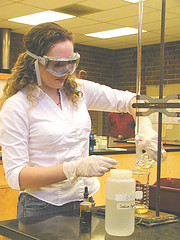The Chemistry Behind Fireworks

If there is one thing that people across the world would unanimously agree, it is the fact that fireworks are impressive and fun to watch and play with. Any festival or sports event is not complete without an amazing display of fireworks. Not many people know that fireworks are not based on rocket science but basic chemical concepts. It does not matter if you buy fireworks online or even from stores that put up fireworks for sale the concepts remain the same.
If you are looking to understand the chemistry behind fireworks, it is important to brush up on your general science knowledge. Everything in the physical world is made of molecules and atoms; it can be said that atoms are the basic stable structure which has a neutral charge and can be piled up to construct matter. To break down the atom, you can compare it to the solar system. The sun, as we know, is the central element of the solar system and the planets are set in their own orbits in an elliptical path around the sun; the internal structure of the atom is architected in the same way the central nucleus surrounded by electrons in different circular orbital. The electrons are negatively charged while the protons are positively charged and the neutrons have no charge at all. But this is not how you see rockets ; you see beautiful colorful patterns in the sky. How does that happen? How is it that lighting a small wick makes Roman candles throw coloured sparks for minutes at a stretch?
The interesting thing is that the electrons are not distributed randomly across the orbits because every atom is different in their way of arrangement this is called electronic configuration. For instance, there are different names assigned to different orbital electronic structure and each of these are defined by their capacity to hold a specific number of electrons. The proximity of the nucleus to the electrons defines their ability to stay inside the electronic structure; if a small amount of energy is fed to the atom in the form of heat or electrical energy, the electrons in the outermost orbital get dispelled in the air after which they come back to their normal states after releasing energy in the form of light waves. This concept is harnessed for the manufacture of fireworks both outdoor and indoor fireworks. For example, sodium atoms give out orange light and barium atoms produce green light.
The next time you are lighting the wick of Christmas crackers or wedding fireworks or even when you are holding sparklers and waving it around to create patterns in the air, remember that the concept behind such phenomenal displays of these cheap fireworks all boils down to chemistry.
“Mr.A Mixides Is the Director of Fireworks Arcade http://www.fireworksarcade.com, the specialist supplier of Chinese fireworks throughout the United Kingdom. Operating within a specialised niche, we are able to offer the best quality of firework entertainment at affordable prices, with the convenience of delivery to your door”
